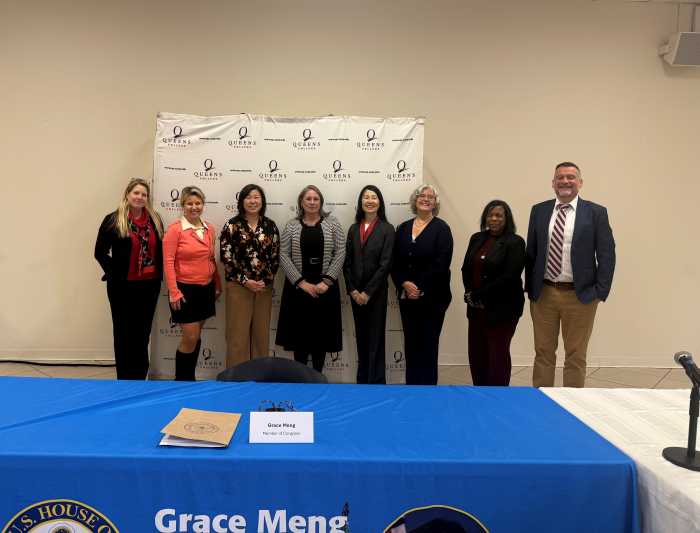DOE tell parents one day before class school buses are cut
“There’s no switch you can flip that says you’re mature now,” said one angry mom to Department of Education (DOE) officials, who informed parents one day before the start of the new school year at William H. Carr Junior High School (J.H.S. 194) that buses for seventh and eighth graders have been slashed.
Now, her 12-year-old son who attends the Whitestone school will have to rely on city transportation, much to the angst of parents in College Point who say they have lost some peace of mind.
In years past, school bus operations for seventh and eighth graders throughout the city were limited to those who lived one-and-a-half or more miles away from a specific school. Many students who used to get bused in from College Point – where they lack both a junior high school and a high school – are now taking multiple city buses each day to attend class at J.H.S. 194. Due to a miscommunication at the Office of Pupil Transportation (OPT) over the summer, the notice that the school-wide bus variances were elimated throughout the city did not come until 24 hours before the first day of school, on September 8, forcing many parents to coordinate rides or teach their children the city bus system – very quickly.
Also in attendence were Assemblymember Ed Braunstein along with Councilmember Dan Halloran, who called the zero-hour announcement by the OPT and DOE “unacceptable.”
Each of the elected officials at the meeting instructed parents to fill out variance requests provided by Eric Goldstein, OPT chief operating officer, and Robert Carney, OPT chief of staff. Through the variance, parents or guardians must fill out a form including hazardous conditions along the route to school or to a public bus stop or subway station; emergency circumstances such as victimization, joint custody or temporary homelessness; or disagreement with the DOE’s measurement of distance from home to school.
But what parents seemed more worried about were the potential for sexual predators on city buses, the crossing of six-lane streets to bus stops and other safety concerns.
“She’s a nervous wreck,” said a parent of a seventh grader. “She has anxiety taking the bus. Does that qualify her as a special needs child? I’m not a happy camper. I think this is so wrong what they did here.”
“For years, on the issue of student transportation, the DOE has gone above and beyond what the state requires, offering busing to students who would not ordinarily be eligible,” said a DOE spokesperson. “In September 2010, the DOE discontinued these variances for about 5,000 students in 71 schools across the city . . . public and private school students no longer receive pupil transportation, but are eligible for student MetroCards. We eliminated all those granted to schools because of the tight budget. However, individuals, based on where they live, may still qualify for a variance by applying for one. We eliminated the variance that says ‘you qualify if you attend the school.’ We will work closely with the schools and the MTA to ensure that all affected students apply and receive student MetroCards for which they are eligible.”



































